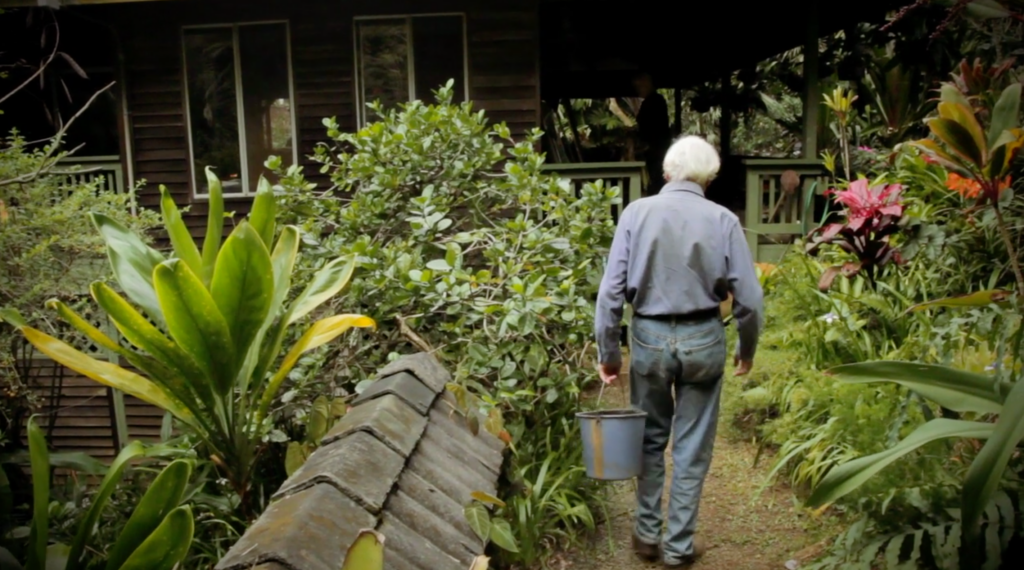
An inherently human scale
“Director’s Notes” are excerpts from our monthly email newsletter, “Stories from the Garden.” Subscribe and see past issues here.
Dear Friends,
Up the rise on the far side of the garden, a vista opens above the canopy. Looking northward over the ocean, the palm forest stretches out below, a riot of shapes and textures on a once barren landscape. Visitors often marvel at the view from this ledge, and at the commitment that beckoned this garden into being: more than 3,000 palms planted by one person, some grown from seed, some raised up from seedlings, each one hand watered through its early months. Today, the palm forest is so dense that it obscures the view of the Merwins’ house on the slope across the valley, and hides William’s potting shed and shade house on the valley floor. But back behind the ledge, on the upland side where William planted only a few palms, things feel quite different. A field of ferns meanders southward and wraps around a swath of grass cut low, kept open as a place of refuge for weary plovers arriving from Alaska each fall.
The garden as a whole—the palm forest in the valley and the fern field up above— makes for an astonishing expression of care for this world, and the place where the two sides meet is one of incredible possibilities for all of us who now steward the garden and its unfolding story. Last month, after years apart and away, board members and staff gathered here to ask ourselves: how will we realize William’s “hope that the planting of palms will continue to fill parts of the land that have not been planted up until now?” As we lingered at this threshold, where a place made of William’s gestures toward the land meets a place to be made of our own, a longtime friend of William’s shared a reflection, almost in passing. Olin Erikson, who worked alongside William in the garden for more than a decade, told us this: the palm garden extended only this far across the land simply because it was as far from the potting shed as William could hand-carry two buckets of water.
I have kept this image with me in the weeks since. William carried the bucket as far as he could to water each palm he planted. And he did it again the next day, and the next. And I’ve been turning this simple unit of measurement over in my mind. It’s a metric of distance, one of inherently human scale, and also of physical effort, and investment of energy on behalf of one’s convictions. And while it might seem to define a specific radius of care, the impact of the efforts inscribed there through daily commitment resonates well beyond. It inspires me to carry buckets as far as I am able. Again and again until change comes about.
With aloha,
Sonnet